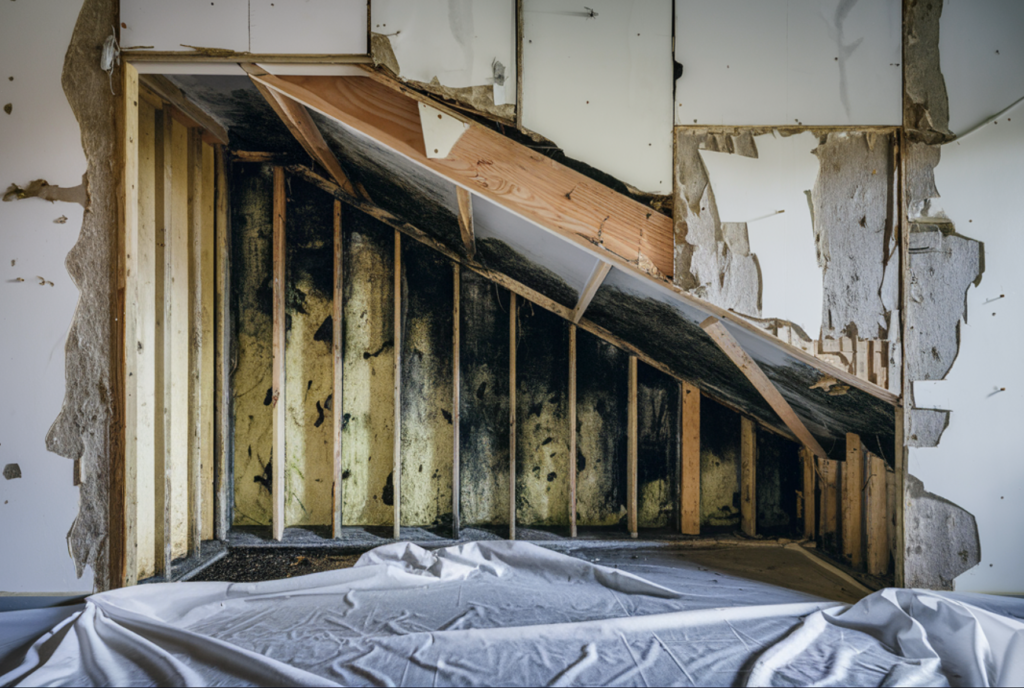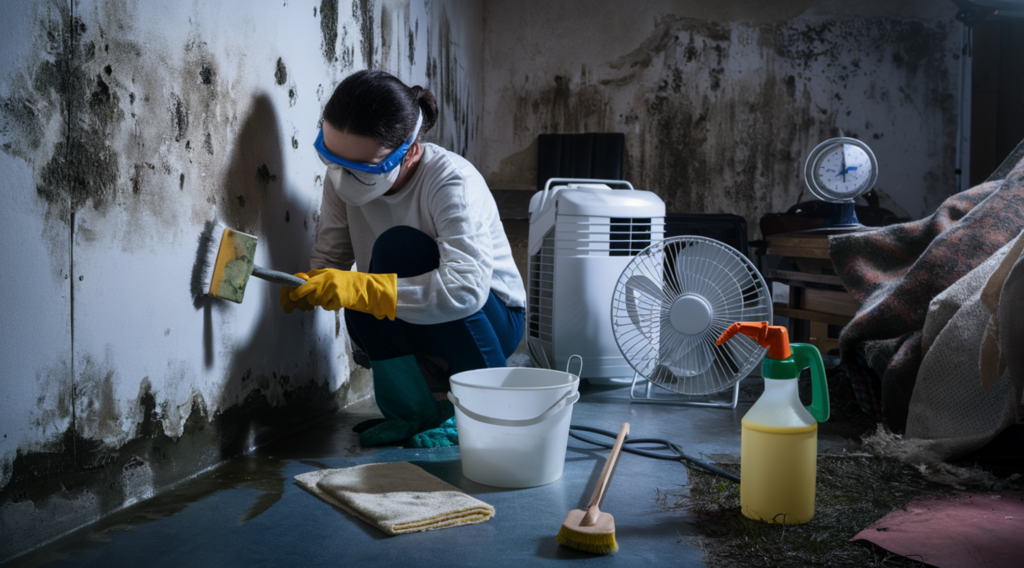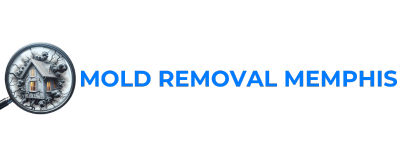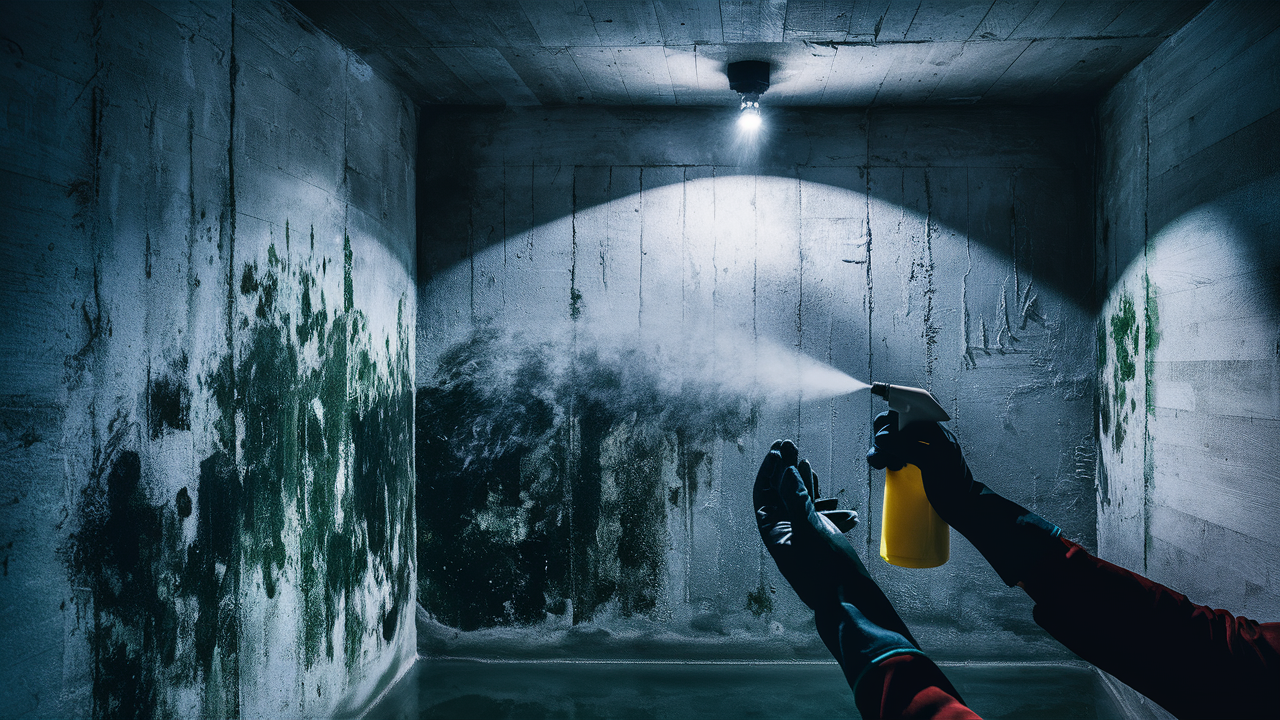Mold In Your Basement: Remove From Cinder And Concrete Block Walls
TL;DR: To remove mold from basement concrete and cinder block walls, first address moisture sources by improving drainage, extending downspouts, and using a dehumidifier set to 45-50% humidity. Clean affected areas with a solution of 1 part water and 1 part vinegar or a 1:10 bleach-water mix, scrubbing with a wire brush. For stubborn mold, use EPA-certified products like Concrobium or Fiberlock Shockwave (spray, wait 15 minutes, wipe off). After cleaning, dry thoroughly and apply Fiberlock Aftershock or a mold-resistant primer like Kilz. Seal concrete with GHOSTSHIELD Siloxa-Tek 8500 or Radonseal to prevent future growth. For cinder blocks, ensure ventilation and consider a vapor barrier. Always wear a half-face respirator with P100 filters during cleanup. For areas exceeding 10 square feet, consult professionals. Prevention is crucial: maintain proper grading, fix leaks promptly, use HEPA air purifiers, and run floor fans for circulation. Regular inspections and keeping humidity below 60% can prevent most mold issues. Remember, mold needs organic material, >13% moisture, and temperatures around 80°F to thrive. For DIY solutions, hydrogen peroxide or a vinegar-water mixture can be effective on porous surfaces like cinder blocks.
Dealing with mold in your basement can be challenging. Mold not only looks bad but also poses health risks and can damage your property if not addressed promptly. You might find mold on your basement walls, concrete floor, rafters, or joists. It can spread quickly, affecting areas such as basement block walls, cinder block walls, ceilings, and concrete walls. Knowing how to remove mold from your basement is essential for maintaining a safe and healthy home environment.
In this guide, we’ll provide clear, practical steps on how to remove mold from various parts of your basement. We’ll cover methods for cleaning mold from basement walls, floors, ceilings, and more, ensuring you can tackle this issue effectively and safely.
What Causes Mold To Grow In Basements?

Mold growth in basements is primarily caused by localized moisture issues such as poor drainage, foundation cracks, presence of organic materials, lack of light, plumbing leaks, and high indoor humidity. Construction practices and materials also influence mold development, particularly in areas where moisture retention and inadequate ventilation are prevalent.
Now, let’s discuss all causes of mold in your basement:
1. Moisture (Water and Dampness)
The primary factor for mold growth in basements is the presence of moisture. Moisture problems are often localized and include:
- Land Shape: The shape and features of the land around the house can make water collect near the house.
- Downspouts: These are pipes that carry rainwater from the roof. If they are too close to the house, water can get into the basement.
- Window Wells: These are spaces outside basement windows. If water collects here, it can leak into the basement.
- Foundation Cracks: Cracks in the basement walls or floors let water seep in.
- Leaky Pipes: Sometimes, pipes or the walls in the basement might have leaks. This can let water in, which makes it easy for mold to grow.
- Ground Slope: If the ground around the house slopes towards the basement, water can pool and cause problems.
- Condensation: This happens when warm, damp air touches a cold surface, like a wall or floor, and makes it wet. Think of it like when your cold drink gets water drops on the outside of the cup.
2. Organic Materials (Things Mold Eats)
The way a basement is built and the materials used can also affect mold growth. Here are the materials that are responsible for mold growth:
- Wood and Drywall: Mold needs food to grow, and it likes to eat things like wood and the paper on drywall. These materials are often found in basements. Mold is often found where drywall touches the floor slab because of moisture wicking and temperature drops below the dew point.
- Carpet and Furniture: If there are carpets or old furniture in the basement, mold can grow on them too because they can get damp and stay damp.
3. Moist Air (Humidity)
Humidity is the amount of moisture in the air. High humidity can help mold grow. Here are some things that can make the air more humid in the basement:
- Showers: Taking showers adds moisture to the air. For example, if the bathroom is in the basement and there is no proper ventilation, steam from the shower can increase humidity levels.
- Drying Clothes: Hanging wet clothes to dry in the basement makes the air moist. For example, if you hang laundry in the basement without using a dehumidifier, it can raise the moisture level in the air.
- Dryers: If the dryer isn’t vented properly, it can release moisture into the basement. For example, if the dryer vent is clogged or not directed outside, it can blow moist air into the basement.
- Wood Stoves: Using wood stoves can change how much moisture is in the air. For example, burning wood can create heat and moisture, which can increase the humidity in the basement.
4. Building Materials And Design
The way a basement is built and the materials used can also affect mold growth:
- Insulation: Different types of insulation (like full-height or half-height) can help manage moisture differently. Basements having insulation only up to half the height have an advantage. When there are water leaks or flooding near the windows, the water can drain out of the finished areas of the basement. This drainage prevents the growth of mold, which often happens in damp conditions.
- Wall and Floor Finishes: The materials used to finish walls and floors can either help keep moisture out or let it in. For example, using materials like waterproof drywall and floor tiles can help prevent mold, while using porous materials like untreated wood can absorb moisture and promote mold growth.
5. Warm Temperature
Mold grows best in warm places, between 77°F and 86°F, but it can grow in other temperatures too. Basements are usually warm enough for mold to grow, especially if they are part of the house and have heating.
6. Darkness
Mold doesn’t need light to grow, which is why dark basements can be perfect spots for it. Unlike green plants, mold doesn’t use light for food. Instead, it gets energy by breaking down stuff like wood or paper. So even though basements are dark, they can have everything mold needs: food (like wooden beams), water (from dampness), and the right temperature. This makes basements a great home for mold, even without any light.
Can Mold In Basement Affect Upstairs?
Yes, mold in the basement can severely impact the upstairs living areas due to mold spores traveling through HVAC systems, air vents, pipes, ducts, and on clothing and shoes.
Mold spores thrive in moisture and can cause health issues like red eyes, runny nose, skin rashes, and respiratory problems. Signs of mold include musty odors, visible spots on walls or ceilings, allergic reactions, and structural damage.
Maintaining indoor humidity below 65% with dehumidifiers, monitoring with hygrometers, fixing leaks, and ensuring proper ventilation are essential. Professional mold remediation, which can cost between $2,500 to $13,000, is recommended for severe infestations.
Immediate actions include cleaning with bleach solutions, using mold-resistant materials, sealing cracks, and addressing moisture sources.
How To Remove Existing Mold In Your Basement?

To remove mold in your basement, reduce humidity with a dehumidifier, clean affected areas with water and vinegar or bleach, use commercial products like Fiberlock Shockwave, ensure proper ventilation, address water leakage, and apply sealers. Wear protective gear and consider professional help for extensive issues.
Here are the steps you can follow to remove existing mold in your basement:
1. Identify And Fix Moisture Sources
To effectively remove mold, you should first dentify and address the sources of moisture that enable mold growth.
Check for leaks in plumbing fixtures and foundation walls or floors. Examine the local geomorphology to ensure the land around your house doesn’t cause water to collect near the foundation. Ensure downspouts direct water away from the house, and extend them if necessary. Window wells should be properly drained to prevent water from entering the basement.
Use a hygrometer to measure the humidity levels in your basement, aiming for levels below 60%. Inspect cold surfaces such as windows, pipes, and walls for signs of condensation.
2. Clean Contaminated Areas
Once you have identified and addressed the moisture sources, clean the areas affected by mold.
Wear protective gear, including gloves, masks, and goggles, to protect yourself from mold spores. For hard surfaces, scrub with a mixture of detergent and water. Use commercially available mold cleaning solutions for more stubborn areas. Use a brush to scrub mold off hard surfaces like walls and floors. Remove and dispose of any porous materials like carpets or drywall that are heavily infested.
3. Disinfect Surfaces
After cleaning, disinfect the surfaces to kill remaining mold spores. Prepare a solution of one cup of bleach to one gallon of water.
Use a garden sprayer for large areas, keeping the surface wet for 10 to 15 minutes to effectively kill mold. For porous surfaces like wood, the bleach solution may need to be reapplied to keep the surface wet for the required time. If the walls have been contaminated with sewage, increase the proportion of bleach to water.
4. Dry The Area Completely
After cleaning and disinfecting, it is crucial to dry the area thoroughly. Use fans, dehumidifiers, and air conditioners to dry the area completely. When placing a dehumidifier, ensure it is centrally located or in the dampest area of the basement to maximize its efficiency.
Empty the water collection pan of the dehumidifier frequently or drain it with a hose to a floor drain. If the outside air is dry, open windows to promote air circulation and drying. It might take several weeks or months for the walls and floors to dry completely. Check the moisture level periodically to ensure the area is completely dry before proceeding with further steps.
5. Discard Unsalvageable Items
Remove and discard items that cannot be saved. Discard items like carpets, carpet padding, draperies, mattresses, box springs, and upholstered furniture that have been soaked or stored in a damp environment.
These items are nearly impossible to clean and dry quickly enough to prevent mold growth. Test whether wooden studs in the walls are dry enough to reseal the wall cavity by inserting a moisture probe. If the level of moisture in the wood is above 12.5 percent, continue drying the wood before resealing the wall cavities.
6. Replace Damaged Materials
After cleaning and drying, replace materials that cannot be cleaned effectively. Replace any drywall, subfloor and insulation that was removed due to mold contamination.
Consider replacing carpets and upholstered furniture that were affected. Fix any leaks from plumbing, roofs, or foundation cracks immediately. Ensure proper drainage around your home to prevent water from seeping into the basement.
7. Ensure Proper Ventilation
To prevent mold from returning, make sure your basement is well-ventilated and dry. Use fans and dehumidifiers to keep the air moving and reduce humidity levels. Install exhaust fans to help remove moisture-laden air. Use a hygrometer to regularly check humidity levels in your basement.
8. Prevent Future Mold Growth
Take measures to prevent mold from returning. Use mold-resistant materials when renovating or building, such as mold-resistant drywall and insulation. Regularly inspect the basement for signs of moisture and mold. Address any issues immediately to prevent mold from growing. Maintain plumbing and drainage systems to ensure they are functioning correctly and not contributing to moisture problems.
What Are The Best Cleaning Products For Mold Removal In Basements?
The best cleaning products for mold removal in basements include water and vinegar solutions, water and bleach solutions, and commercial products like Fiberlock Shockwave and Aftershock. Water and vinegar, or bleach solutions, are effective for initial cleaning, where you spray the mixture on affected areas and scrub with a putty knife. For more stubborn mold stains, peroxide can be used in conjunction with bleach.
Trisodium phosphate (TSP) is a highly effective cleaner for removing grease and soil from surfaces, which are common contributors to mold growth. TSP, often found in paint and hardware stores, should be used with caution, as it is highly alkaline; users should wear rubber gloves and avoid inhaling the powder or getting it in their eyes.
Another essential cleaning product is chlorine bleach (sodium hypochlorite), which is one of the most effective and least expensive disinfectants for mold. A bleach solution, typically one cup of bleach to one gallon of water, should be applied to hard, clean surfaces and kept wet for 10 to 15 minutes to kill mold. For large areas, a garden sprayer can be used to apply the bleach solution evenly.
It is important to note that chlorine bleach should not be mixed with ammonia or other household cleaners containing ammonia due to the risk of toxic fumes.
Additionally, for textiles that can be laundered, chlorine bleaches and quaternary compounds are effective disinfectants. Pine oil cleaners and phenolic cleaners, although not as strong as chlorine bleach, are safe for textiles and can reduce mold and bacteria on fabrics. These cleaners should be used according to product instructions to ensure their effectiveness. Lastly, desiccants like silica gel can help reduce moisture in storage areas, further preventing mold growth.
| Cleaning Products for Mold Removal in Basements | Use | Instructions |
|---|---|---|
| Water and Vinegar Solution | Initial cleaning | Spray on affected areas and scrub with a putty knife. |
| Water and Bleach Solution | Initial cleaning | Mix one cup of bleach with one gallon of water. Spray on mold, let sit for 10-15 minutes, then scrub. |
| Commercial Products | Specialized mold removal | Use products like Fiberlock Shockwave and Aftershock according to manufacturer instructions. |
| Peroxide and Bleach | Stubborn mold stains | Use peroxide along with bleach for tougher stains. |
| Trisodium Phosphate (TSP) | Grease and soil removal (mold prevention) | Available at paint and hardware stores. Wear rubber gloves, avoid inhaling powder, and avoid contact with eyes. |
| Chlorine Bleach | Mold disinfection on hard surfaces | Mix one cup of bleach with one gallon of water. Apply with a garden sprayer for large areas. Keep surfaces wet for 10-15 minutes. Do not mix with ammonia. |
| Textile Cleaning | Mold and bacteria reduction on fabrics | Use chlorine bleaches, quaternary compounds, pine oil cleaners, or phenolic cleaners. Follow product instructions. |
| Desiccants (e.g., Silica Gel) | Moisture reduction in storage areas (mold prevention) | Place desiccants in storage areas to reduce humidity and prevent mold growth. |
How To Remove Mold From Basement Joists?
To effectively remove mold from basement joists, follow these steps:
- Identify Moisture Source: Inspect for leaks or drainage issues and fix them to eliminate moisture that promotes mold growth.
- Ventilate Area: Ensure proper ventilation using fans or a dehumidifier to maintain low humidity levels.
- Wear Protective Gear: Use N95 masks, gloves, and eye protection to prevent inhaling mold spores and exposure to cleaning chemicals.
- Clean Mold: Use a 50/50 bleach and water solution, hydrogen peroxide, or commercial mold remover like Concrobium. Spray the solution onto the moldy areas and scrub with a stiff brush.
- Alternative Cleaning: For a natural option, mix water and borax. Apply the solution to the joists and scrub thoroughly.
- Dry Completely: Allow the joists to dry completely using fans or a dehumidifier to ensure no moisture remains.
- Treat with Mold Inhibitor: After cleaning and drying, apply a mold inhibitor like MicroBan or Concrobium to prevent regrowth.
Seal with Primer: Optionally, seal the treated areas with a mold-resistant primer such as KILZ for added protection.
What Types Of Basement Waterproofing Methods Are Effective Against Mold?
Effective basement waterproofing methods to stop mold involve several steps, including foundation dampproofing, proper grading, good drainage systems, sealing cracks, and improving ventilation.
Here are the waterproofing methods a mold remediation company adopts to waterproof basement so that it doesn’t promote mold growth:
Foundation Dampproofing
According to a CMHC study, it is very important to keep water from getting into the basement walls. This means putting a waterproof coating on the outside of the foundation to keep moisture out.
Proper Grading
Making sure the ground around the house slopes away from the foundation helps rainwater flow away from the basement walls. This stops water from gathering near the foundation, which often causes basement moisture.
Drainage Systems
Having good drainage systems, like perimeter drains, French drains, and sump pumps, is also important. These systems help manage and redirect water away from the foundation, reducing the likelihood of water infiltration. For example:
- Perimeter drains collect and channel water away from the foundation.
- Sump pumps remove water that collects in the basement.
- Ensuring downspouts direct water away from the house helps too.
Sealing Cracks
Using sealants to block water from getting through cracks in the walls or floors is another key method. Waterproof coatings and membranes applied to the inside or outside of the basement walls add another layer of protection against moisture. You can seal concrete with GHOSTSHIELD Siloxa-Tek 8500 or Radonseal to prevent future growth.
Improving Ventilation
Installing exhaust fans and use dehumidifiers to keep humidity levels low helps stop mold from growing.
How Do I Properly Insulate My Basement To Prevent Mold?
Proper insulation helps to reduce condensation on basement walls and surfaces by creating a thermal barrier that prevents warm, humid air from coming into contact with cold surfaces. This is essential because condensation can create damp conditions that are conducive to mold growth.
Using mold-resistant insulation materials, such as rigid foam boards or spray foam, further enhances moisture control by providing an additional layer of protection. Additionally, installing a vapor barrier on the warm side of the insulation prevents moisture from entering the walls, reducing the risk of condensation within the insulation itself. Sealing all gaps and joints during the installation process is critical to ensure that no moisture can penetrate the insulation.
What Building Materials Are Resistant To Mold For Basement Renovations?
Mold-resistant drywall, also known as green board or purple board, has a moisture-resistant core and paper facing that inhibits mold growth. Cement board is another excellent choice, particularly for areas prone to high moisture, as it does not contain organic materials that mold can feed on.
For insulation, closed-cell spray foam and rigid foam boards are highly effective because they provide a moisture barrier while offering excellent thermal insulation. Mold-resistant paint and sealants can be applied to walls and other surfaces to create an additional layer of protection against moisture.
Metal studs are preferable over wooden ones for framing, as they do not support mold growth. Flooring options such as tile, vinyl, laminate or concrete are also resistant to mold and are better suited for basement environments compared to carpets and other porous materials.
Should I Contact A Professional Mold Remediation Company To Get Rid Of Mold In Basement?
Maintaining a mold-free basement is essential for a healthy home, but sometimes professional help is necessary. If you’re dealing with a large mold infestation or persistent moisture problems, our expert team at Mold Removal Memphis is here to help. We offer comprehensive mold remediation services to ensure your basement is clean and safe. Don’t let mold compromise your health or property—contact us today for a thorough inspection and effective mold removal. Keep your home mold-free and your family safe with our professional services.

